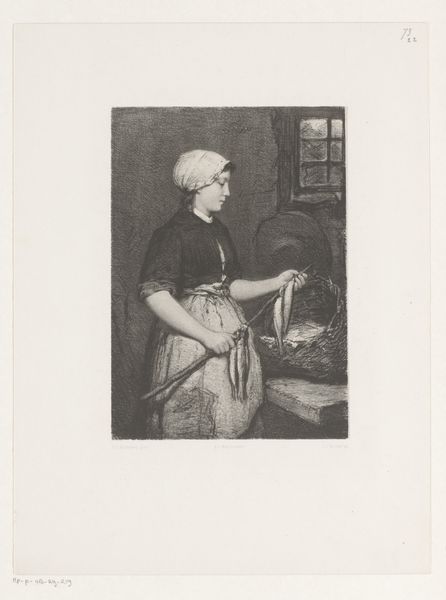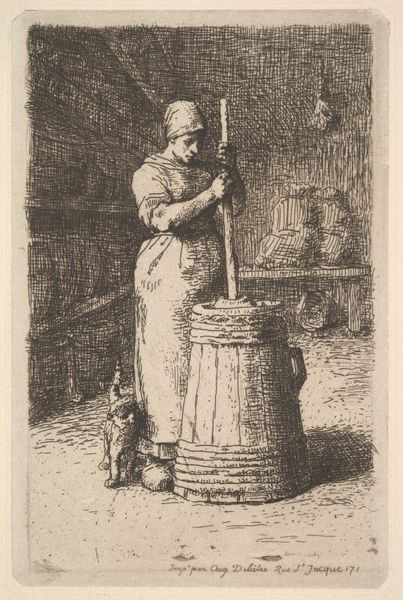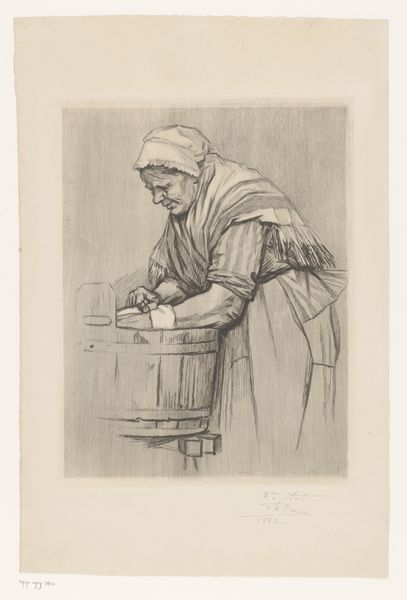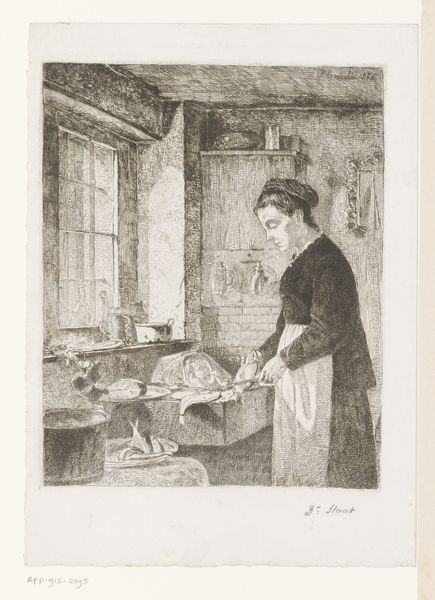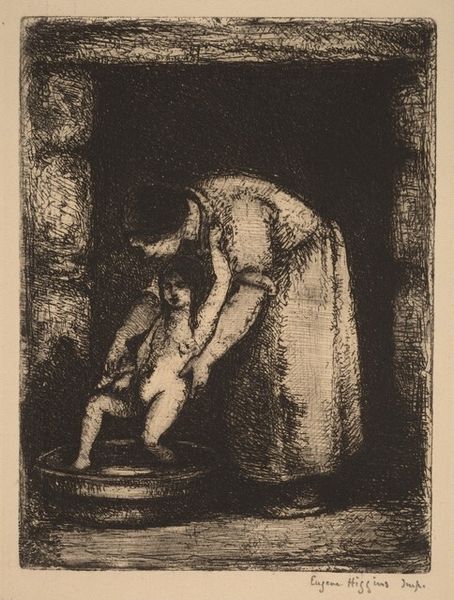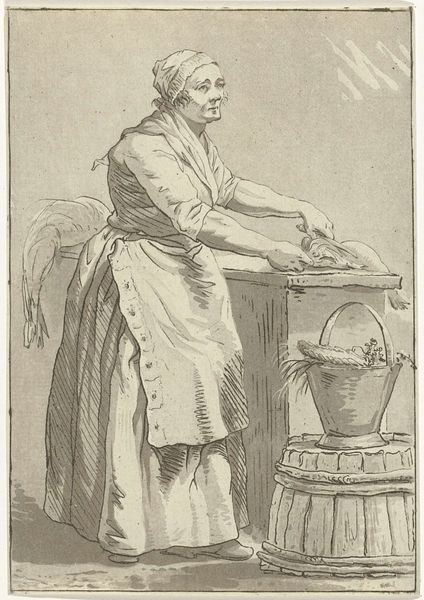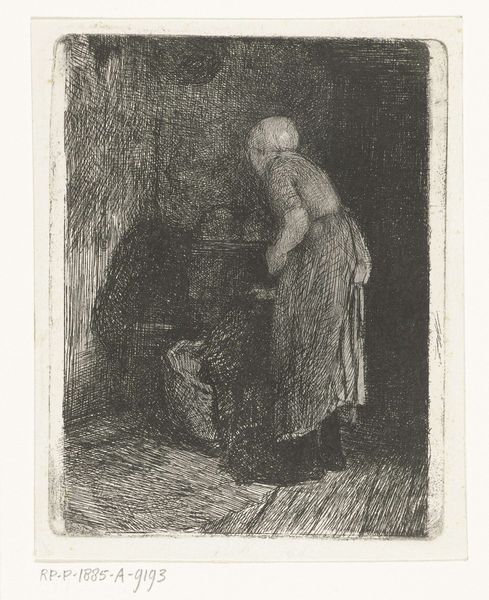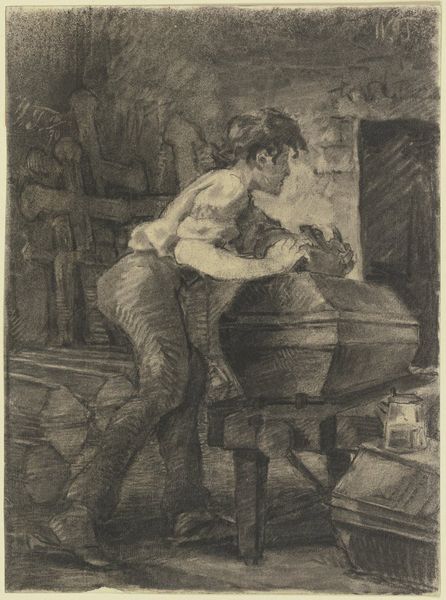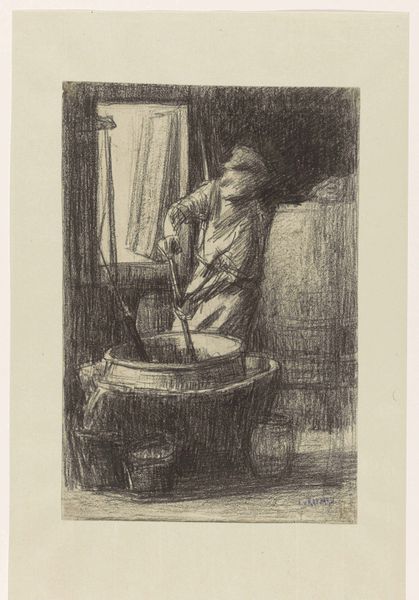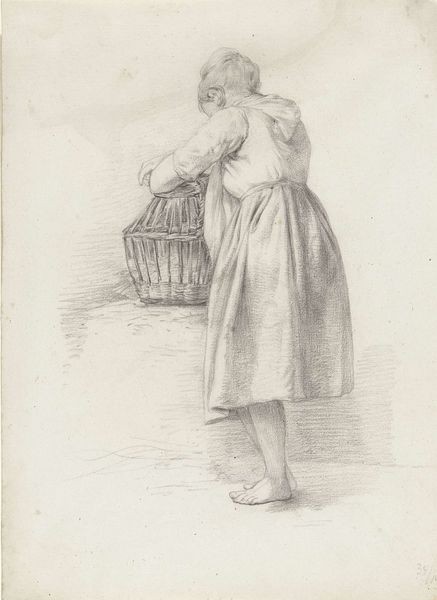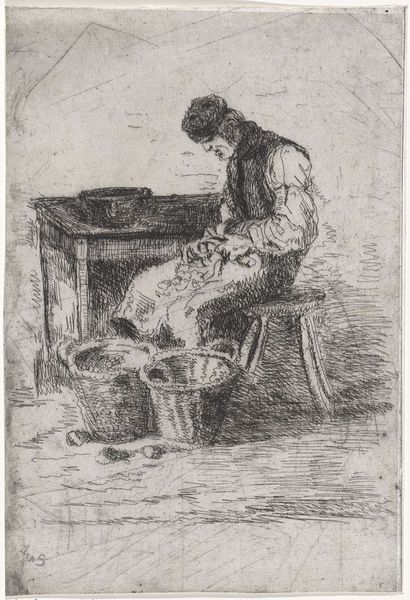
#
pencil drawn
#
photo of handprinted image
#
amateur sketch
#
light pencil work
#
photo restoration
#
pencil sketch
#
old engraving style
#
charcoal drawing
#
pencil drawing
#
pencil work
Dimensions: height 190 mm, width 120 mm
Copyright: Rijks Museum: Open Domain
Curator: Welcome. We’re standing before Gerard Jan Bos’s etching, “Vrouw bij een wastobbe,” created in 1882. It translates to “Woman at a Washtub.” Editor: My first thought is somber. The monochrome palette and dense linework create a real atmosphere of…starkness. There's a real contrast in the rendering of her apron versus the suggestive background. Curator: It’s striking how Bos focuses on a mundane scene, elevating the daily labor of working-class women. This etching highlights the repetitive, physical nature of laundry work—consider the tub itself, likely made by a local cooper. What material realities defined this woman’s existence? Editor: Well, observe the artist’s meticulous mark-making. Note how light and shadow delineate form. See the concentration in her posture? The artist really knows how to achieve such incredible visual and tonal depth with just simple lines. Curator: Indeed. Bos used etching techniques to mirror the tedious, repetitive nature of the woman’s task, aligning the artistic process with the subject's labor. Think of the acid bath repeatedly biting into the metal, mirroring the relentless nature of domestic work at the time. Editor: Though it is clear he's made formal choices; the strong verticals create a grounded feeling, reflecting stability. There’s a softness too—in how the forms blend slightly, implying more than they delineate. Curator: The textures speak volumes about social class. Compare the rough-hewn wash tub and the fabric of her apron with the labor inherent in washing clothes at this time. It underscores a socio-economic status rarely depicted in high art. Bos seems concerned with social realism here, not idealizing beauty. Editor: Still, Bos abstracts forms to enhance expression. It shows what lines and tones do, but what do the marks actually *show*? The convergence between art and real subject...the universal expression captured... Curator: Perhaps. His process transforms everyday realities into something we contemplate aesthetically. I've gained a new perspective. Editor: As have I. I hadn't really considered all the societal aspects before your analysis, which adds a necessary depth.
Comments
No comments
Be the first to comment and join the conversation on the ultimate creative platform.
